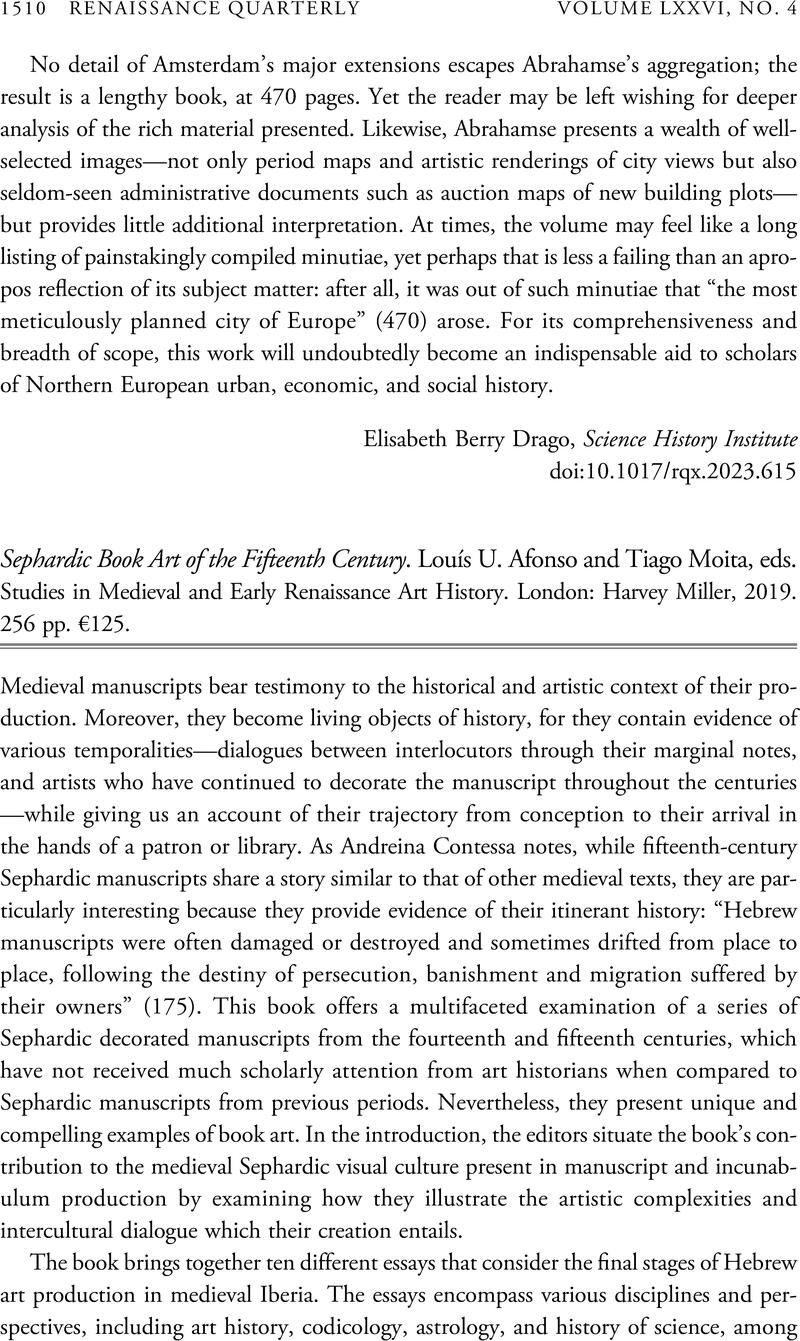No CrossRef data available.
Article contents
Sephardic Book Art of the Fifteenth Century. Louís U. Afonso and Tiago Moita, eds. Studies in Medieval and Early Renaissance Art History. London: Harvey Miller, 2019. 256 pp. €125.
Review products
Sephardic Book Art of the Fifteenth Century. Louís U. Afonso and Tiago Moita, eds. Studies in Medieval and Early Renaissance Art History. London: Harvey Miller, 2019. 256 pp. €125.
Published online by Cambridge University Press: 24 January 2024
Abstract
An abstract is not available for this content so a preview has been provided. Please use the Get access link above for information on how to access this content.

- Type
- Review
- Information
- Copyright
- Copyright © The Author(s), 2024. Published by Cambridge University Press on behalf of the Renaissance Society of America



